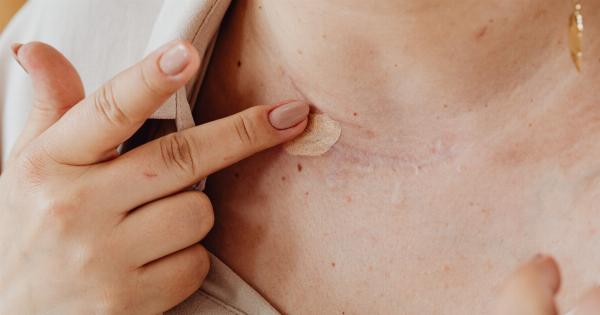Chickenpox, also known as varicella, is a common and highly contagious viral infection that affects millions of people worldwide.
It is characterized by a red, itchy rash that covers the entire body, along with small, fluid-filled blisters that appear on the skin. While chickenpox is usually mild and self-limiting, it can leave behind unsightly scars that can last for years. In this article, we will discuss some effective ways to remove scars from chickenpox.
1. Use Vitamin E Oil
Vitamin E oil is a powerful antioxidant that can help to heal damaged skin and reduce the appearance of scars. To use, simply apply a small amount of vitamin E oil to the affected area twice daily.
You can also take vitamin E supplements orally to boost your body’s own natural healing process.
2. Apply Aloe Vera Gel
Aloe vera gel is a natural moisturizer that can help to soothe and heal damaged skin. It contains compounds that can stimulate the growth of new skin cells, which can help to reduce the appearance of scars over time.
To use, simply apply a small amount of aloe vera gel to the affected area twice daily.
3. Try a Skin Lightening Cream
There are many over-the-counter skin lightening creams available that can help to reduce the appearance of scars from chickenpox.
These creams contain ingredients such as hydroquinone, kojic acid, and glycolic acid that can help to lighten the skin and make scars less noticeable. However, these creams can be irritating to some people, so it’s important to test them on a small area of skin first.
4. Get Microdermabrasion
Microdermabrasion is a non-invasive cosmetic procedure that can help to reduce the appearance of scars from chickenpox. It works by removing the outer layer of dead skin cells, which can help to stimulate the growth of new, healthy skin cells.
The procedure is usually done by a dermatologist or other trained professional.
5. Consider Laser Resurfacing
Laser resurfacing is a more invasive cosmetic procedure that can help to remove the top layer of damaged skin and stimulate the growth of new, healthy skin cells. It is typically done under local anesthesia and requires some downtime for recovery.
While it can be expensive, laser resurfacing has been shown to be very effective at reducing the appearance of scars from chickenpox.
6. Try Silicone Gel Sheets
Silicone gel sheets are a non-invasive and inexpensive way to reduce the appearance of scars from chickenpox. They work by creating a protective barrier over the scarred skin, which can help to reduce redness and flatten out raised scars.
To use, simply apply the silicone gel sheet to the affected area for several hours each day.
7. Use Tea Tree Oil
Tea tree oil is a natural antiseptic that can help to reduce inflammation and speed up the healing process of damaged skin.
To use, dilute a small amount of tea tree oil in a carrier oil such as coconut oil or olive oil, and apply to the affected area twice daily.
8. Practice Good Skin Care
One of the best ways to prevent scarring from chickenpox is to practice good skin care.
This includes keeping the affected area clean and dry, avoiding scratching or picking at the blisters, and using a gentle, fragrance-free moisturizer to keep the skin hydrated. It’s also important to avoid sun exposure while the skin is healing, as this can cause further damage and discoloration.
9. Get Professional Help
If you have severe scarring from chickenpox that is affecting your self-esteem, it may be time to seek professional help.
A dermatologist can assess your condition and recommend the best course of treatment, whether that involves prescription-strength creams, cosmetic procedures, or other interventions.
10. Have Patience
Finally, it’s important to remember that scar removal takes time and patience. While there are many effective treatments available, it’s unlikely that you’ll see results overnight.
Be consistent with your chosen treatment, practice good skin care, and be patient – with time, you’ll start to see improvements in the appearance of your scars.































